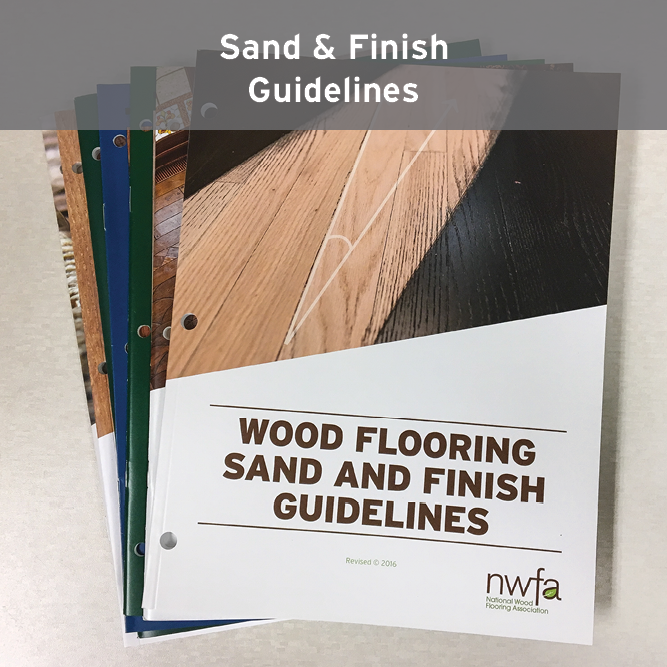Light Commercial Hardwood: Savvy Pointers to Avoid Costly Callbacks






Paramount to a successful commercial hardwood flooring installation is in knowing how to avoid certain pitfalls normally associated with commercial installations that don’t come into play as often in residential applications. There are quite a few of them, but I have selected five that could cause serious headaches and costly callbacks if not properly addressed. They include:
· Moisture Testing
· Subfloor Preparation
· Hardwood Flooring Hardness (what species work best for commercial applications)
· Soundproofing Issues
· Installing the Right Wood Floor for the Specific Application
Moisture Testing. Perhaps the most critical step prior to installing hardwood flooring is to test the slab for the proper moisture content. Not doing so can result in catastrophic results such as warping, buckling, bowing or severe cupping. In most commercial installations the architect will specify that moisture testing be made in accordance with industry standards. This lack of specific guidelines can sometimes create conflict. So it’s always best to recognize not only the National Wood Flooring Association (NWFA) Installation Guidelines, but also guidelines published by the manufacturers of the adhesive (if applicable) and those of the hardwood flooring manufacturer. Given a choice of guideline options I recommend these two helpful hints:
· Remember that the manufacturer’s directions alwayssupersede the Installation Guidelines. If you run into trouble on a job, you’ll have the support of the adhesive or flooring manufacturers if you followed their directions for that product.
· You’ll never get into trouble for doing more testing than is required. Testing the slab does take extra time and money, but from my perspective, I would want the extra insurance of knowing what the moisture levels were in that slab before I installed the floor.
Subfloor Preparation. In commercial construction you are most likely to be installing the hardwood over a concrete slab. Take a careful look at the prep work that needs to be done in order for the floor to be properly installed. This is not a step in which you want to cut corners. In many cases you will find that the slab is not level to acceptable standards, and it may also have some cracks that will require more than “just a little patch.”
You can pour a self-leveling underlaymentover almost any type of subfloor and then glue down a wood floor right over it. The process for using these self-leveling products is simple: sweep the floor, apply a primer and then pour the product at a thickness of 1/8” to 1/4”. It needs to dry overnight and then is ready for a wood floor. Once cured, the self-leveling compounds are porous and are suitable for varying types of adhesives—check with your adhesive manufacturer to be sure.
Hardwood Flooring Hardness. Depending on your specific application, point load requirements, and foot traffic, the hardness of the wood flooring could be a significant factor in how well the floor performs over time. Hardness is defined as “resistance to indentation using a modified Janka hardness test.” (See chart.)
Once you have a good understanding of the performance requirements take a look at the comparative hardness to make sure the specie of wood specified for your commercial application is hard enough to do the intended job. See the chart for a sampling of certain popular wood species for a relative comparison of their hardness.
Soundproofing Issues. Let’s say you are bidding a multi-level condo building. What do you need to do about soundproofing? For many high-end multi-family residences, soundproofingis big business. Surprisingly, sound waves travel faster through material such as wood than they do through air. There are two measurement systems used for noise when it comes to flooring: Impact Insulation Class (IIC) and Sound Transmission Class (STC). IIC is the impact noise that is transmitted through a floor/ceiling assembly. STC is the actual sound in a room. The higher the IIC or STC rating, the better the noise reduction, with 50 considered the minimum for multi-family dwellings (always check to see if the rating is more stringent for the project you’re working on).
When using an engineered wood floor where sound control is a concern, one of the most common methods is to use a floating floor over a 2mm underlayment foam. A newer solution for sound control is using polymer-based wood floor adhesive that not only holds the material to the floor but also has sound absorption qualities, with excellent IIC and STC ratings.
Install the Right Wood Floor. There are so many more choices of styles, species, type, and installation methods from which to choose today. This makes it vital that you install the right product for your specific application. Some of the hardwood flooring options and variables include on-site sand and finish vs. prefinished, solid vs. engineered, glue down vs. floating installation, popular red oak or maple species vs. bamboo or one of the “exotics,” and acrylic-impregnated vs. a surface-applied finish.
Engineered hardwood flooring continues to grow in popularity, especially in commercial applications. Today’s preference for longer and wider looks is more suited to engineered wood platforms because they offer more stability than solid hardwood and are less susceptible to bowing. They are ideal for glue-down applications over a concrete slab and can also be installed as a floating floor in most similar applications.
The popularity of prefinished wood is surging for a variety of reasons. Number one is that the finish quality can be controlled more closely in a manufacturing environment vs. a field application. There are certainly less variables that come into play. And on commercial installations, with job schedules always tight and getting tighter, a prefinished floor means quicker installation and move-in, so prefinished floors are often preferred in these circumstances. One other factor to consider is that the manufacturer’s warranty is usually much longer on a factory-finished floor than one for an on-site sand and finish job.
By following these helpful pointers you are sure to eliminate some of the most common commercial installation setbacks, and help ensure a more profitable job for you.
Looking for a reprint of this article?
From high-res PDFs to custom plaques, order your copy today!









